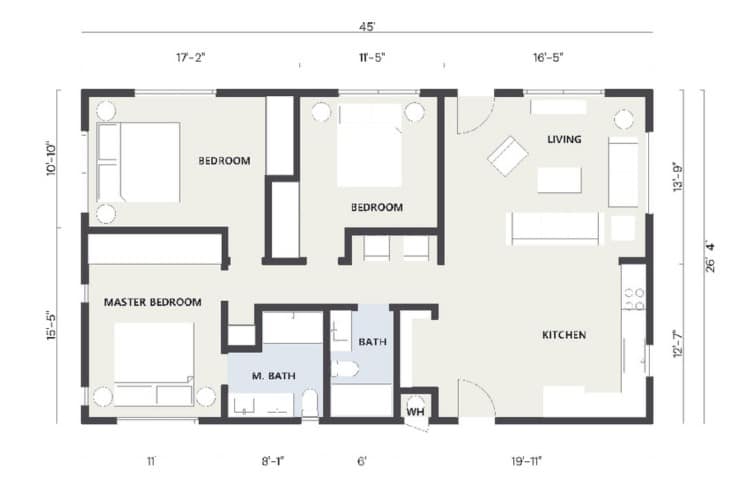Ultimate Guide to ADU Rental Income: How Much You Can Make and What to Know
12 min read
Accessory Dwelling Units (ADUs) allow homeowners to generate passive income, increase property value, and address local housing needs. ADUs can transform unused space into a profitable, attached, or detached rental unit.

Everything you Need to Know About ADU Rental Income
The rapid demand for housing, coupled with historically high lending rates means that investors and homeowners are looking for innovative ways to find that often talked about (but seldom obtained) key to financial independence: passive income. Especially in big, metropolitan cities, ADU rental income has become instrumental in solving both of these issues—because these dwelling units provide housing for those who could otherwise not afford expensive high-rise apartments, and create cash-flowing assets for owners looking to reduce mortgage payments and increase property value.
There are two major types of ADUs: attached and detached.
Attached ADUs are generally less costly and involve converting a preexisting section of the primary structure into a separate unit, like a garage or primary bedroom.
Detached ADUs are units built entirely separate from the primary dwelling (and are often more costly for that reason). Regardless, both must have a means of ingress/egress, a kitchen, a sleeping area, a bathing area, and bathroom facilities.
While ADU rental income may be achievable for many homeowners, you must adhere to local zoning ordinances, HOA requirements, the legal conversion process, etc. to be eligible to create an ADU. There are also best practices to follow when deciding what type of ADU to create, how to market that ADU, and what type of rental model you want to use to get the most income out of it.
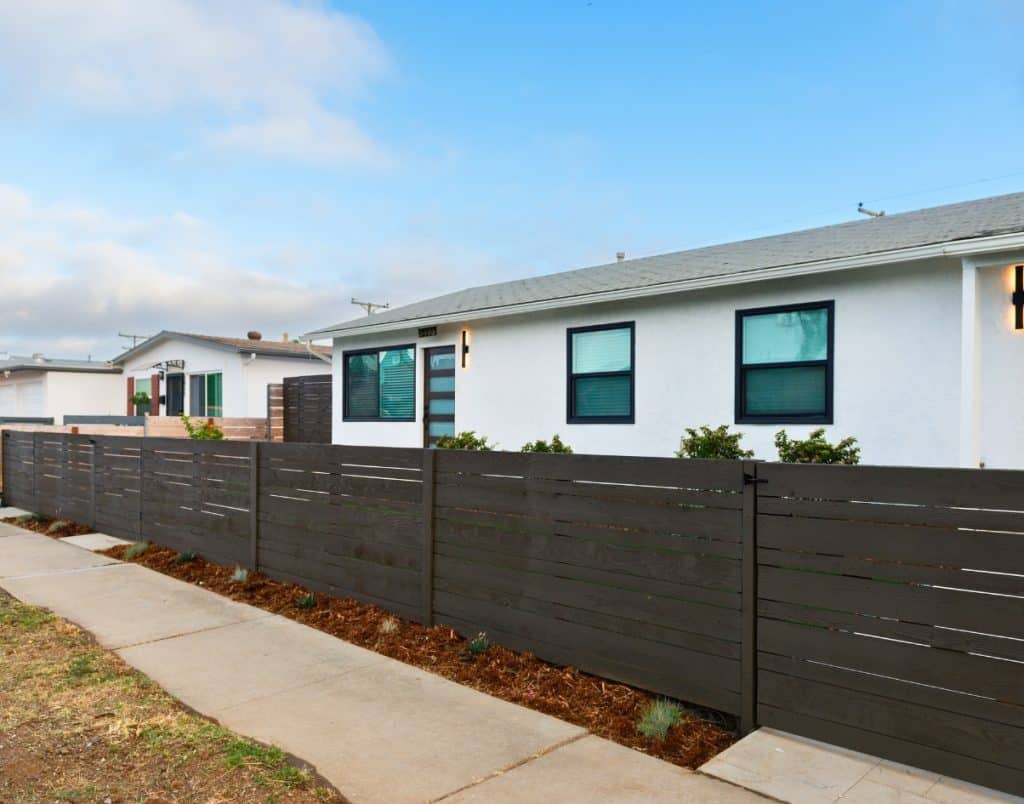
Well-designed ADUs maximize rental income and address housing demand with style and functionality.
Understanding ADU Rental Income Potential
ADUs are different from other types of investment real estate in that they are only created in lots zoned for single-family dwellings. They’re essentially a step above house hacking and require a conversion process but, when done correctly, are often the cheapest, most efficient path to 2 legal units—which greatly increases the property’s value, both for resale or for borrowing.
ADU Rental Income Example
While ADUs can greatly increase your property value and provide an opportunity for rental income, savvy homeowners will always aim to maximize the return on investment (ROI). Consider the following example for calculating ROI on your ADU investment: if you have a 2B/1BA, 750 sq ft detached ADU build in San Diego, CA, with the following financial details:
- Project Total Cost $348,000
- Financed $330,000 financed at 8% (annual interest: $29,057)
- Out of Pocket $18,000
- Gross Annual Rent $42,000 ($3,500/month)
- Maintenance and Vacancy Loss $4,200
- Property Tax $3,480 (1% of total cost)
- Net Income $34,320 ($42,000 – $4,200 – $3,480)
- ROI/Cash on Cash Return 9.86% (Net Income/Total Cost or $34,320/$348,000)
Then the project would provide a 9.86% ROI while also greatly increasing the value of the property. If you’d prefer to avoid manual calculations, there are many helpful rental calculators—that give you accurate projections for specific areas—available online.
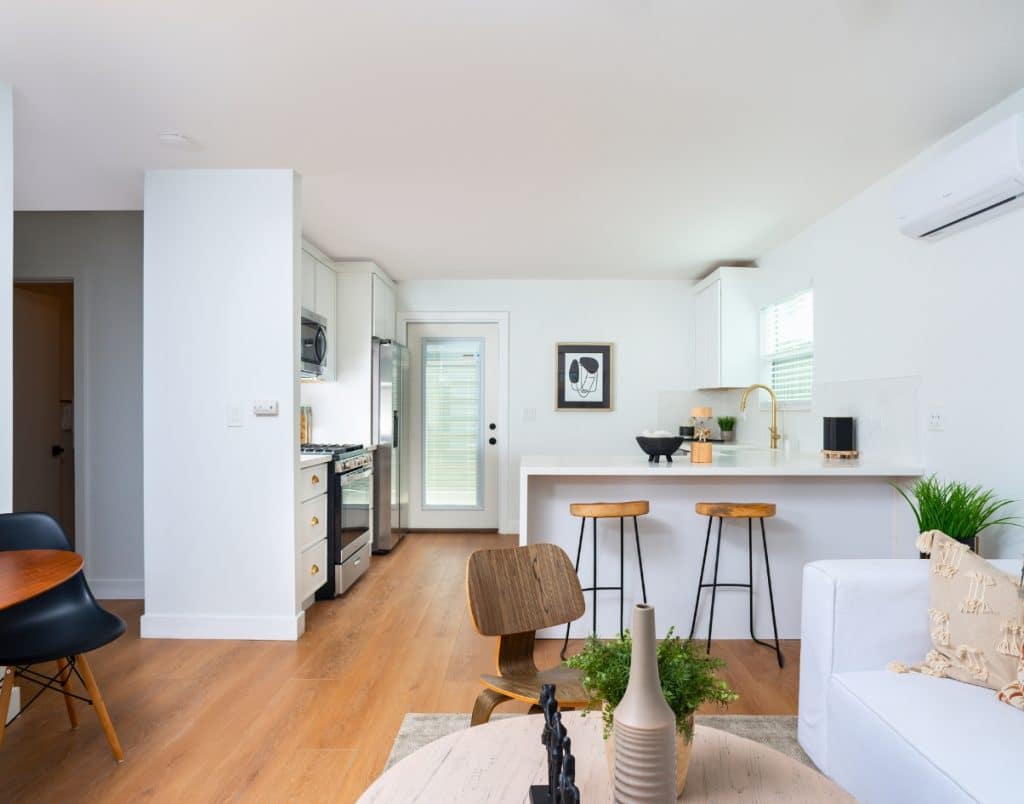
A detached ADU in a high-demand area can yield nearly 10% ROI with smart planning and budgeting.
Benefits of Renting an ADU
As an asset class, real estate is unique in that it can offer you a stream of cash flow in a historically stable market (excluding that hiccup in 2008) and give you access to capital if you ever wish to borrow against the equity of a piece of property. Creating an ADU is a cost-effective way to leverage forced appreciation in a property relative to traditional real estate investing.
Financial Benefits
What makes an ADU particularly appealing is how it enhances a property’s utility as a separate, fully functional dwelling unit; this can serve as a source of rental income, which adds considerable value to a property appraisal. A history of rental earnings can also help you qualify for borrowing.
But how much money can you actually expect to generate from ADU rent?
The short answer: it depends.
ADU rental income is dependent on a variety of factors like location, size, amenities, and rental strategy. For example, the national average rental income for a 600 sq ft ADU is $1940 per month for a long-term rental, but for higher-income cities like San Diego, the average rental income is $2,600 per month.
Should you decide to use your ADU as a short-term rental, you could increase your monthly ADU rental income to $3,500-5,000 per month. While this may be appealing to many investors, there are pros and cons to consider for each type of rental strategy as well as local zoning limitations for each market. Planning ahead of time is key for ensuring that your projected rental income will cover the cost of financing and provide positive cash flow.
Tax Incentives & Deductions
Similar to other types of investment real estate, ADUs offer you tax advantages when you operate it as a business while being less cost-prohibitive than the former. You get to deduct things like maintenance, utilities, mortgage interest, and the holy grail of real estate deductions, bonus depreciation.
Always consult your trusted tax professionals and CPAs when trying to implement any of these strategies. Should you qualify for one of the passive activity loss rule exceptions, you can potentially use your passive real estate losses as tax deductions.
ADU vs. Traditional Rental Property
There are a few factors that may make traditional rental property investing less appealing than building an ADU, even if it may be a more lucrative proposition.
Finding cash-flowing deals (properties that generate more rental income than their operating expenses) for multi-family residential properties can be very difficult, especially since there is so much information available to investors in recent years. Duplex, triplexes, and quadplexes are highly sought after and typically do not stay on the market very long if they’re good deals.
Investing in those properties usually costs much more than creating an ADU, especially if it is an attached conversion. If you don’t have the cash flow to put a 20% deposit down on a $1.5M multifamily complex, then it’s more manageable to build an ADU if your current home is zoned for it.
Lastly, real estate investors aren’t always cut out to be property managers, and the maintenance required for a large, multi-family complex may be more work than an investor is willing to do. Having a small, cash-flowing unit on their own property provides a manageable, low-maintenance alternative.
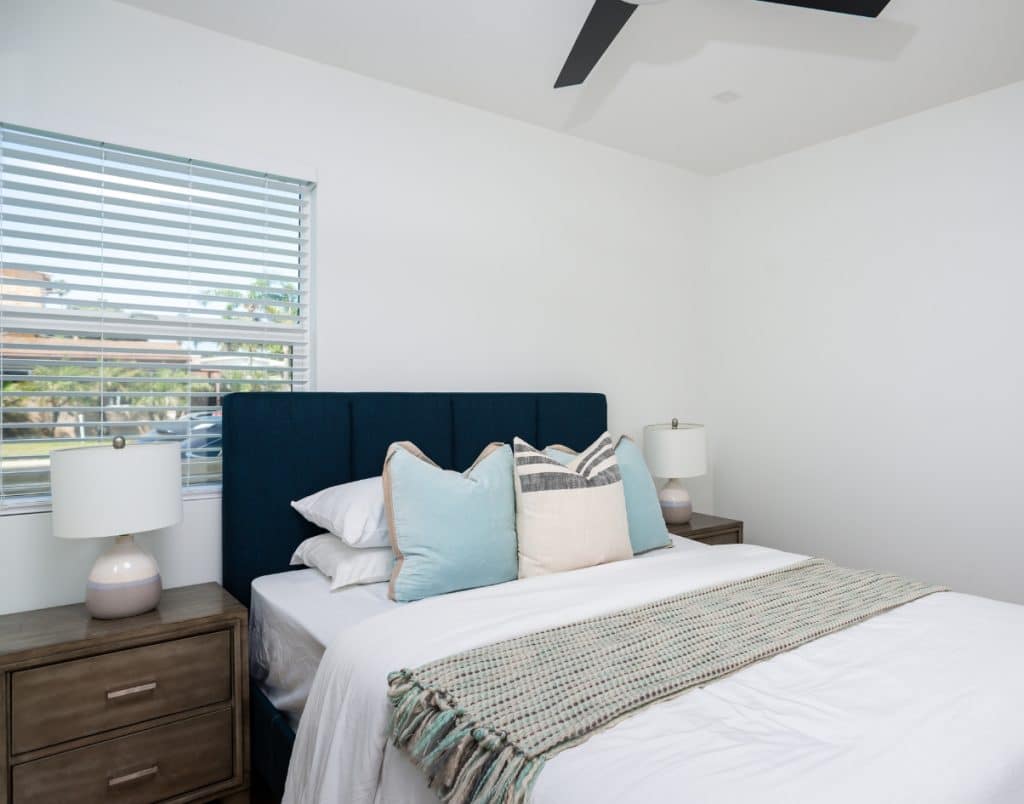
Comfortable ADU designs attract tenants, boost rental income, and enhance property value.
Common ADU Rental Models
ADU rentals will usually fall into one of two categories: long-term rentals and short-term rentals. Both types have a specific set of pros and cons.
Long-Term vs. Short-Term Rentals
Long-term rentals typically require a lease term of at least 1 year. While they generally may not be as lucrative as short-term rentals, they require less maintenance and offer more stable tenancy.
On the other hand, short-term ADU rentals are rented for periods of 30 days or less, and especially if they are located near local travel destinations, you have the potential for significant ADU income (think Airbnb).
Some markets have restrictions on, or outright ban the use of ADUs as short-term rentals to ensure the availability of long-term units for local renters; for example, in Las Vegas, you must first obtain a license through a lottery selection process, which effectively keeps many investors out of the short-term rental market in that city.
Which Model is Best for You?
Start by defining what your goals are with the investment ADU and secondly what local zoning limitations you might have to work with. If you are looking for stable tenancy, relatively low maintenance, and live in an area that is not a travel destination, then a long-term rental might be the right choice for you.
If you have the liquidity (cash on hand) to withstand greater potential vacancy loss and are looking for the greatest possible return on investment, you may want to market your ADU as a short-term vacation rental.

Choose long-term stability or short-term profits based on your goals and zoning regulations.
Maximizing Your ADU Rental Income
Especially when first starting out, it can prove incredibly difficult to operate an ADU rental effectively—you may have project costs that go over budget or your vacancy loss ends up being higher than anticipated, and what started out as a water-tight plan has now become a massive financial strain. Below are some practical strategies homeowners can use to avoid these pitfalls and maximize their ADU rental income.
Property Management Tips
When it comes to property management, sourcing and retaining quality tenants can be one of the biggest challenges for an investor, but there are a few things you can do to find high-quality tenants. Properly vetting your tenants is perhaps the most important aspect of the process. Especially if you’re marketing your room for rent on a public forum like Facebook Marketplace or Zillow, sit down with the potential tenant and walk through the lease agreement so there is no confusion on any terms of the agreement.
Conduct a background screening, and ask for things like references to prior landlords, credit checks (soft pulls), and paystubs to make sure they are able to, and have a history of, consistently paying rent. You can plan all you want, but if you aren’t able to effectively collect rental income, your plan won’t work.
Upgrades That Boost Rental Value
Now, when it comes to low-cost, high-reward improvements that you can add to your ADU, upgrades can make your ADU significantly more appealing, allowing you to charge more in rent. Solar panels are a no-brainer, especially if you live in a city/state that offers tax incentives for doing so. You can use the energy generated to power the ADU, pushing the cost of financing the solar panels onto the tenant through increased rent, and once they are fully paid off, they will increase the value substantially.
There are also a few other additions that create a luxury experience that is not necessarily at a luxury price point—under cabinet lights, soft close toilet lids, high-pressure shower heads, soft close kitchen cabinets, etc.
Energy Efficiency & ADU Design
Especially for detached ADUs, designing energy-efficient and eco-friendly units can be very worthwhile, including the obvious benefits of lower utility bills, features like solar panels, energy-efficient appliances, and sustainable building materials, and their positive environmental impact. Energy efficiency can also be taken into account during the initial design of the ADU by utilizing practices such as passive solar: Changing the orientation of doors, windows, and walls, to help regulate the temperature and light inside the ADU. Seasoned builders and LEED-certified engineers will be able to help guide this process.
Use Data-Driven Pricing Strategies
When it comes to pricing your ADU, the goal is to maximize rental income without pricing yourself out of the market. While that can be as simple as finding a comparable in your neighborhood and making price adjustments based on its features, there are some online tools that are helpful in the process: Zillow, Facebook Marketplace, and your local MLS (Multiple Listing Service), as well as Rentometer will give you an idea of what similar units are renting for in your area.
If you’re interested in real estate investment, you’re likely familiar with Bigger Pockets—they have a great free online resource that can help you establish a starting price for your ADU. If you’re having trouble filling the unit or are getting more interest in your listing than expected, don’t be afraid to price test.

Premium upgrades and energy-efficient features drive higher rental rates and tenant satisfaction.
The Legal Side of Renting Your ADU
Just because you have space for it in the backyard, doesn’t mean your property is zoned for an ADU. You must make sure you comply with local ordinances before you start your project.
The easiest way to ensure compliance is to go to your local zoning and planning office; they will tell you if you are eligible to operate an ADU rental on your property and make you aware of the local policies regarding HVAC systems, side and rear setbacks, parking requirements, building codes and permits, etc. Pro tip: always keep your correspondence in writing—in the event of a dispute, it will be best to reference official correspondence instead of relying on memory or interpretation.
Common Challenges in ADU Rental and How to Overcome Them
The number one mistake is not budgeting enough money for a loss of vacancy. You never want to struggle to make a loan payment just because a tenant unexpectedly took off, so as a general rule of thumb, you should always have 1-3 months of vacancy per unit on hand. If you’re having consistent vacancies in your unit, try offering some flexibility in the lease agreement to incentivize tenants to stay.
Many issues also arise from gray areas within the lease agreement. For example, if a tenant has someone staying in the unit for months at a time but there is no clause in the agreement that limits the number of days a tenant can have guests, then you may be stuck in a powerless position. While it may be tedious, thinking of various scenarios you may encounter as a landlord and having language in the lease agreement to address those issues can save you a lot of stress down the road. Read your local and state landlord/tenant laws and be familiar with them.
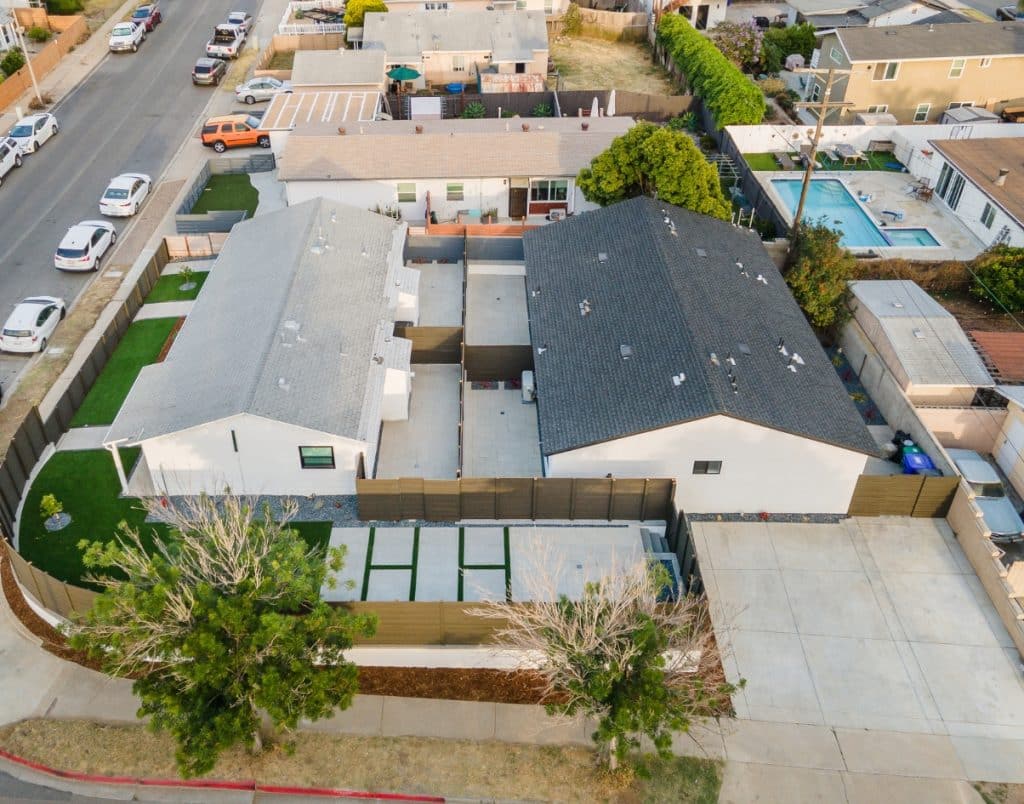
Planning for zoning, vacancies, and tenant issues ensures ADU profitability and success.
FAQs About ADU Rental Income
Operating a successful rental ADU isn’t always straightforward. Below are some of the most frequently asked questions from first-time investors.Good tenants are hard to come by, so you need to cast your net in the right pond. The listing should reflect the tenants you are trying to attract: good photography, well-organized, honest, and to the point. Be upfront about the information you want to gather, whether that’s a credit score, employment history, pet ownership, etc. Meeting with potential tenants and seeing if they pass the “vibe check” is also an important aspect of choosing a good tenant.
In short, yes. Most local jurisdictions require a separate rental agreement—and it’s also prudent for the landlord to do so. Just because a rental agreement covers your tenancy, it likely won’t cover everything you’ll want for your ADU rental.
Usually, but it depends. If you have your rental unit established as its own LLC, then any income received would be declared as operating income for the company. If you’re running it as a sole proprietorship, you’ll likely need to report it as earned income, depending on your state’s tax laws.
Turn Your ADU into a Reliable Source of Income
For many, ADUs are the most efficient, low-maintenance way to get into real estate investment, creating a stream of passive income as well as building the value of their property. If you’re a Southern California resident, Better Place specializes in San Diego ADUs, offering consultation services to help with the design, permit process, and construction. If you would like to see a free estimate for your next project, use this calculator, or contact Better Place for a free consultation.

